Key takeaways:
- The Waterfall methodology offers a structured approach to software development but can limit flexibility and adaptability.
- Successful project outcomes rely on open communication and continuous feedback rather than merely adhering to rigid documentation.
- Experiences of failure emphasize the importance of creativity, team collaboration, and vulnerability in leadership for project success.
- Incorporating lessons learned and fostering flexibility can enhance future project management practices significantly.
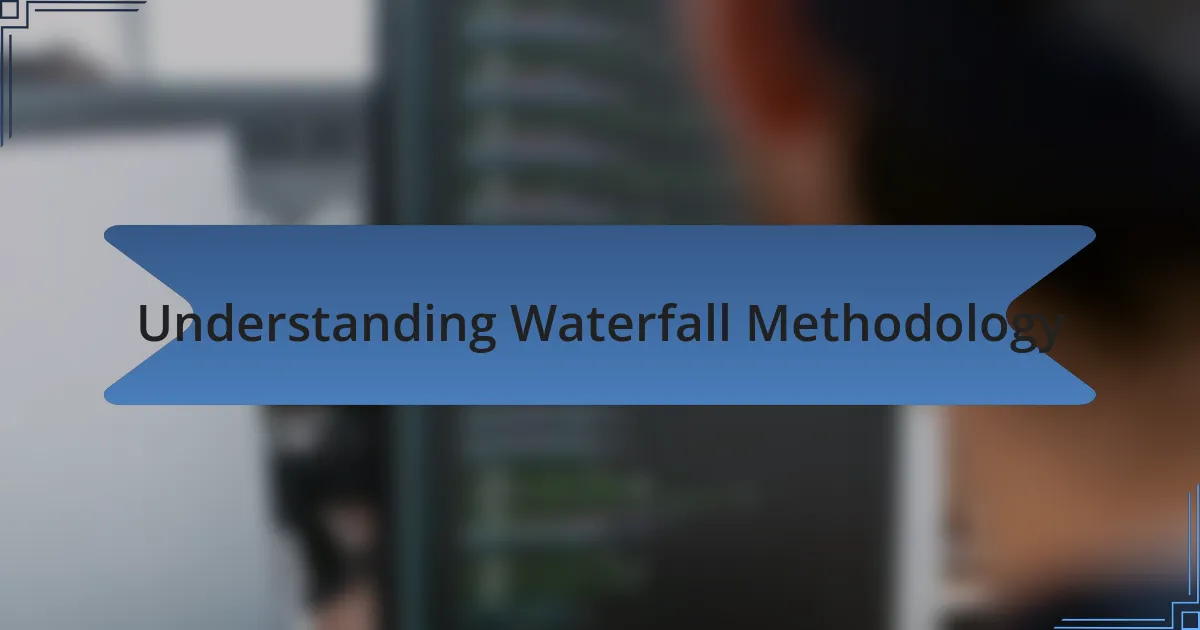
Understanding Waterfall Methodology
The Waterfall methodology is a linear and sequential approach to software development that emphasizes completing one phase before moving on to the next. I remember my first project where I followed this model closely; each step felt like a milestone celebration, but I quickly learned that the rigid structure can stifle flexibility. Have you ever found yourself stuck in a process, wishing you could simply pivot? That’s the challenge with Waterfall—it can be both a comforting path and a frustrating box.
At its core, Waterfall is about clarity in planning. Each phase—requirements, design, implementation, testing, and maintenance—needs thorough documentation, which can serve as a roadmap. I once spent countless hours perfecting project documentation only to realize later that team dynamics shift and understanding evolves; documentation, while important, can sometimes feel like an anchor rather than a guiding light.
The method shines in projects with well-defined scope and requirements. However, I’ve encountered many situations where unforeseen changes in client needs derailed timelines. Is it really effective if adaptability is compromised? Reflecting on these experiences, I value the lessons learned about balancing structure with the necessity for agile responsiveness. Waterfall may have its place, but it taught me that sometimes, the best-laid plans require a willingness to adjust and evolve.
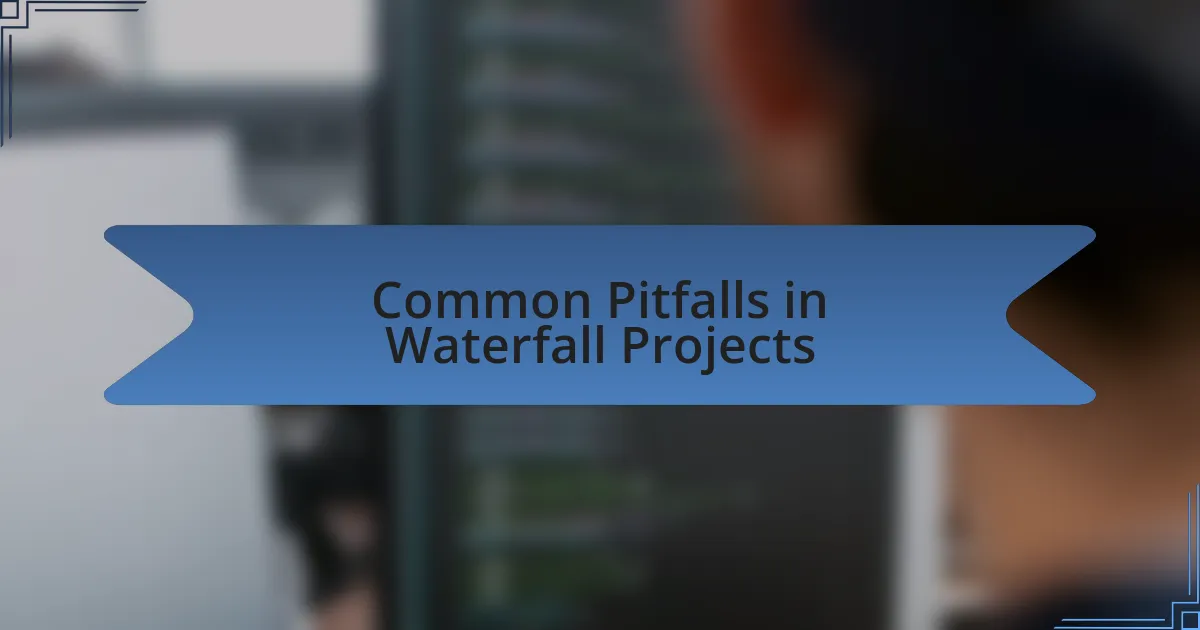
Common Pitfalls in Waterfall Projects
One of the most significant pitfalls I encountered in Waterfall projects is the overwhelming reliance on initial requirements. In my early days, I was part of a project where we meticulously outlined every detail before starting development. It felt satisfying at first, but as the project progressed, I realized how quickly those requirements became outdated. Have you ever felt the sting of realizing your work no longer aligns with what was needed? It’s a humbling experience that taught me the importance of remaining adaptable, even when the plan seems set in stone.
Another common danger lies in the strictly defined phases of the Waterfall model. I vividly remember a project that dragged on because we spent too much time in the design phase, only to encounter unforeseen challenges during implementation. It was disheartening—like building a beautiful house only to find the foundation was weak. This scenario made me question how we define success. Is it really about following a plan, or is it more about ensuring that what we build meets real-world needs?
Finally, communication can become a major obstacle in Waterfall projects. I once led a team that focused heavily on documentation, thinking that would keep everyone aligned. While the documents were comprehensive, many team members felt left out of the loop, leading to misinterpretations and delays. I often ponder the role of collaboration—how can we bridge that gap? It became clear to me that fostering open communication channels could have minimized misalignments and ultimately enhanced project outcomes.
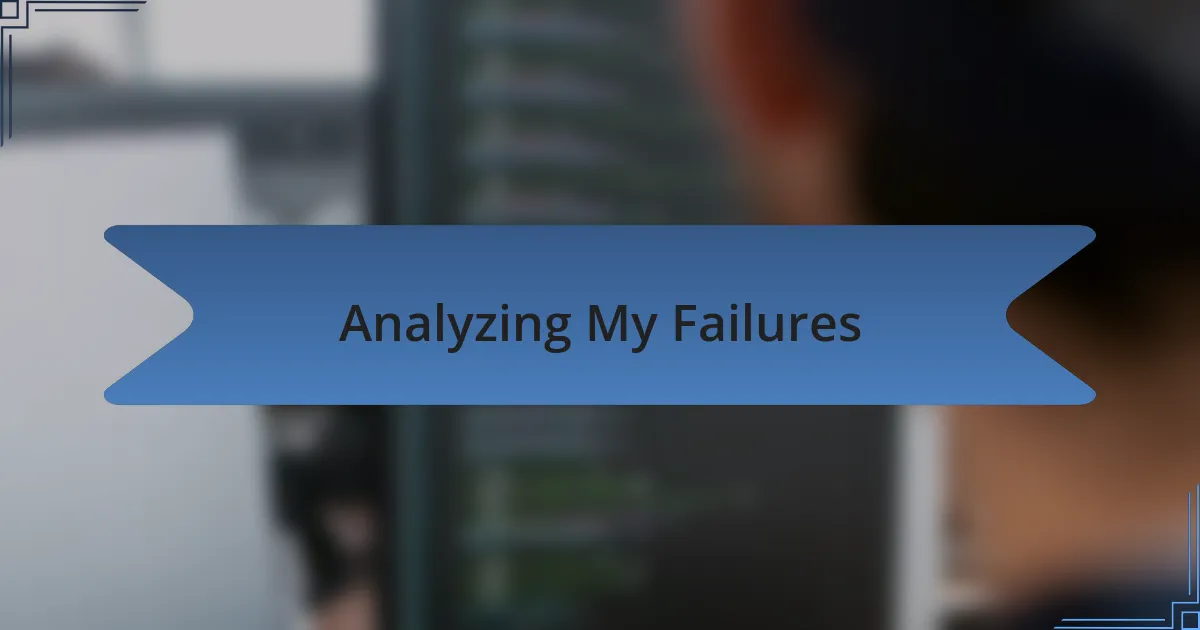
Analyzing My Failures
Reflecting on my failures in Waterfall projects, one striking experience stands out. I was once convinced that exhaustive and meticulous documentation would pave the way for smooth sailing. Instead, I found that it led to a false sense of security. How many times have you watched plans unfold only to realize they felt more like chains? It was a stark reminder that too much focus on documentation can suffocate creativity and adaptability.
Another failure revolved around the rigidity of timelines in the Waterfall approach. I recall a project where I made a bold commitment to stakeholders about the release date, only to succumb to unexpected delays in coding. It was uncomfortable explaining why we missed the deadline, feeling like I let everyone down. This taught me a valuable lesson: even in a structured environment, flexibility is essential. Can we really anticipate every roadblock, or is it naive to think we can?
Lastly, I learned the hard way that stakeholder feedback during development is crucial. I vividly remember showcasing a fully-formed product that was meant to delight the client, only to discover it was misaligned with their evolving needs. It was a crushing moment, realizing I had prematurely closed the door on dialogue. This experience reshaped my perspective—shouldn’t we keep the lines of communication open instead of waiting for the end to hear what truly matters? It taught me that continuous engagement fosters alignment and ultimately leads to a more successful outcome.
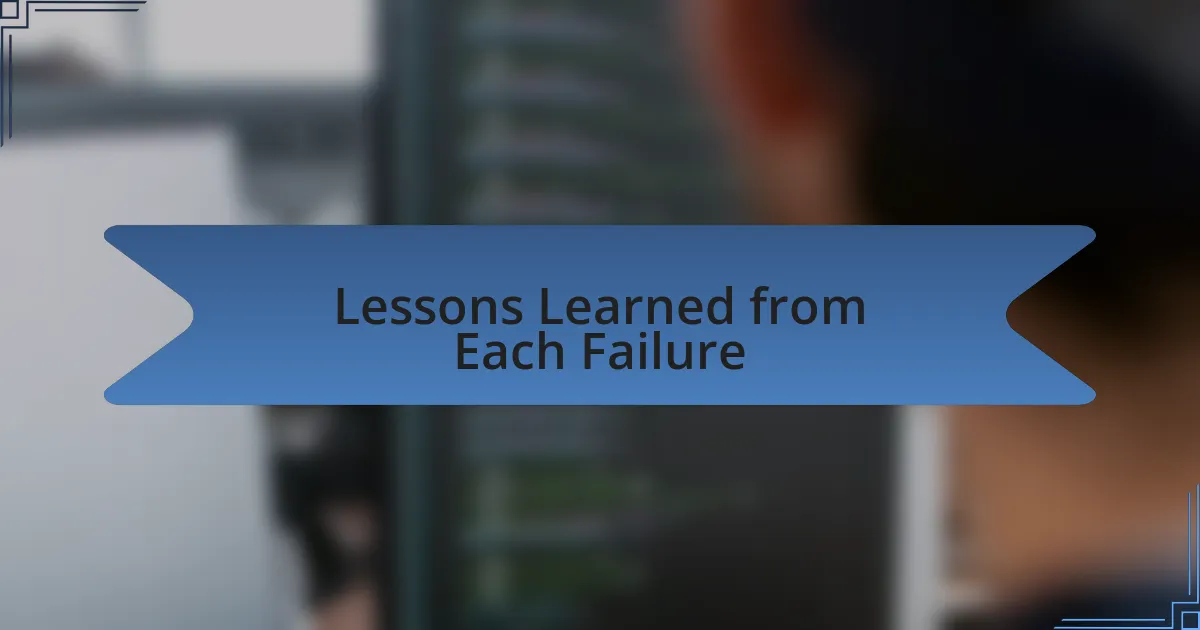
Lessons Learned from Each Failure
Reflecting on my experiences, I’ve realized that the emphasis I placed on rigid planning often stifled innovation. In one project, I was so committed to adhering to our initial scope that I ignored a brilliant idea from a team member. When I finally listened to the suggestion, the outcome exceeded our initial expectations. Wasn’t it foolish to overlook this opportunity? This taught me that a collaborative environment encourages creativity and ultimately enhances project outcomes.
Another hard lesson came from failing to manage expectations with my team during a particularly challenging phase of a project. I remember feeling overwhelmed and not wanting to admit my struggles, thinking it would undermine my authority. However, when I eventually opened up, it actually strengthened our team’s bond and led to a renewed collective effort. Shouldn’t we embrace vulnerability as a strength rather than a weakness? This experience showed me the importance of transparency in building trust and encouraging problem-solving.
Finally, I learned that post-mortem analyses are just as crucial as the development process itself. After delivering a project, I used to rush to the next one without reflecting on what went wrong. In one memorable instance, my team gathered to discuss our frustrations, and it became a powerful moment of clarity. Realizing that each mistake had a lesson hidden within it, I began to appreciate these discussions as vital for growth. Isn’t it remarkable how failure can be the greatest teacher if we allow ourselves to learn from it?
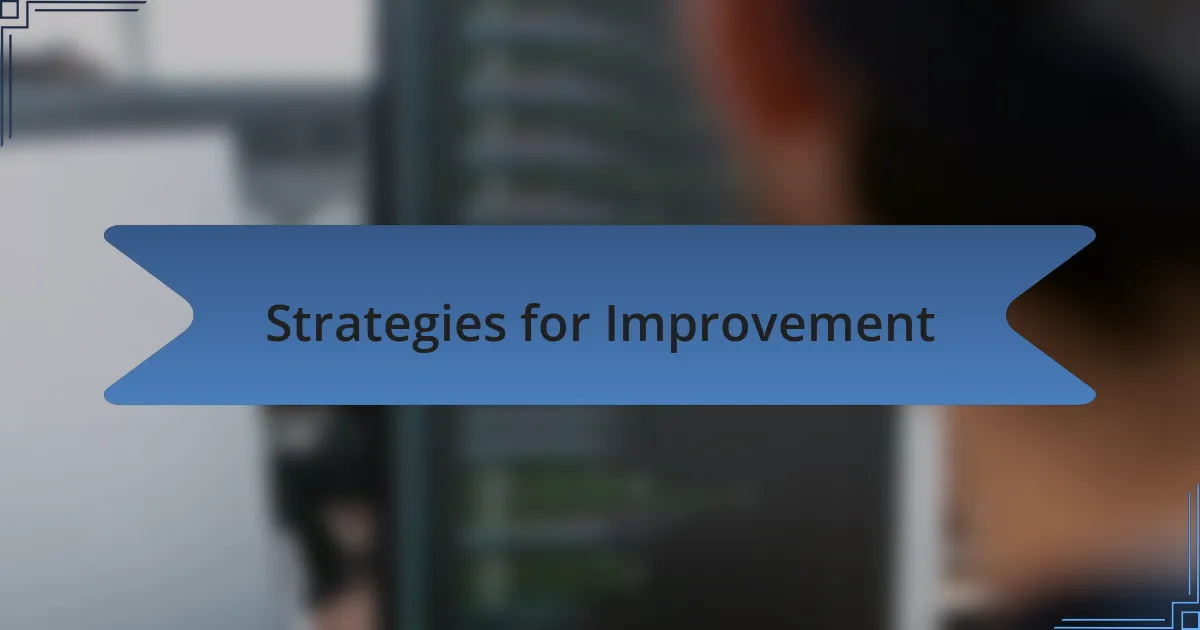
Strategies for Improvement
One effective strategy for improvement is to foster an open environment that encourages team members to share ideas, no matter how unconventional they may seem. In my early days, I noticed that when I encouraged my team to voice their suggestions, some truly innovative solutions emerged. It struck me how the fear of judgment can stifle creativity; by creating a safe space for discussion, we can unlock potential we never knew existed. Have you noticed how collaboration often leads to breakthroughs?
Another approach that has significantly impacted my work is the practice of iterative feedback loops. I once implemented a system where team members regularly checked in on each other’s progress and shared constructive feedback. This not only helped us to identify issues early but also nurtured a culture of continuous improvement. It was enlightening to witness how a simple shift in communication could revive a project that seemed stagnant. How can regular feedback transform your team’s dynamics?
Lastly, I believe in the power of setting realistic milestones and celebrating small wins along the way. In one project, I was so focused on the end goal that I overlooked the importance of acknowledging progress. Once I started celebrating each achievement—no matter how minor—I saw a notable boost in morale. This not only motivated the team to keep pushing forward but also reinforced our shared commitment to the project. Isn’t it amazing how small victories can fuel larger successes?
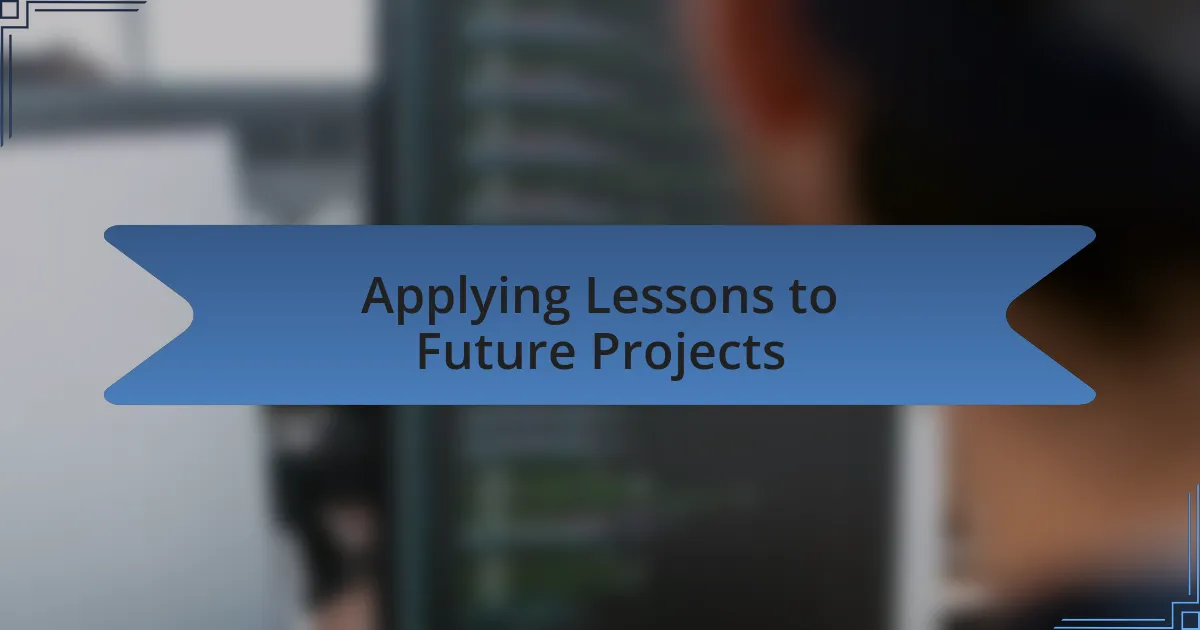
Applying Lessons to Future Projects
When I reflect on past project failures, I realize the importance of incorporating lessons learned into future initiatives. In one specific project gone awry, I overlooked the necessity of clear documentation, which led to major miscommunications. That experience taught me to foster comprehensive and accessible documentation practices, ensuring that everyone can catch up quickly and remain aligned. Have you considered how much smoother things could go with well-documented processes?
Another valuable lesson I’ve gained is the significance of flexibility in project management. Early on, I clung too tightly to initial plans, resisting changes that could have benefited the project. I learned that being adaptable allowed my team to pivot and recalibrate in response to emerging challenges rather than feeling shackled to outdated strategies. Isn’t it fascinating how openness to change can rejuvenate a stagnant project?
Moreover, I’ve come to appreciate the role of retrospectives in refining my approach. During one project, we gathered to discuss what went wrong—allowing everyone to voice their experiences and emotions. This not only provided clarity but also built camaraderie among the team. Reflecting on past efforts has taught me to acknowledge not only the challenges we faced but also the resilience that emerged. How might a simple conversation shift the trajectory of your next project?